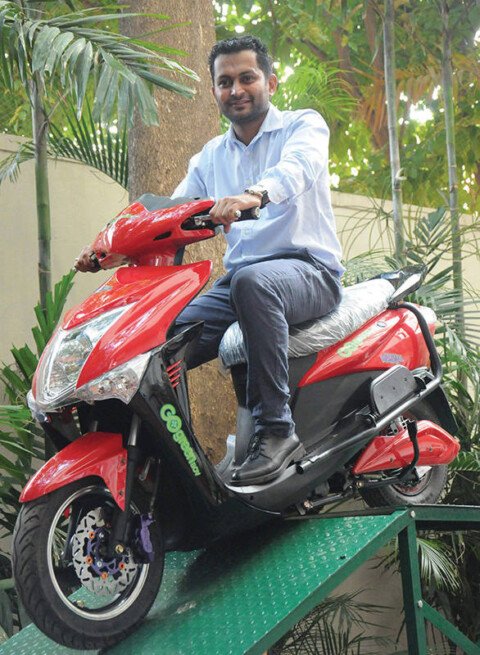Forecasting demand is essential to supply chain management and businesses can best do that through the timely synthesis of information. This involves reducing the time for receiving projected and actual customer demand information and establishing as close to real-time product demand as possible. Managers should also work to understand demand patterns throughout all stages of the supply chain by sharing information and collaborating with other managers of different chain stages. Other methods include reducing the sizes of orders, consistently offering good product prices as a way to avoid surges resulting from promotional discounts, improving customer service, and eliminating causes for customer order cancellations to ensure smooth ordering patterns. Speculating a second wave of COVID-19, Avinash Gawade, Senior Manager- Supply Chain Planning at Mahindra and Mahindra says that detailed stock analysis of the inventory points from vehicle dealers to spare parts suppliers will help uncover idle excess inventories, and that supply chain managers can take corrective action, and set norms, while moving more inventories at a predictable, reliable cadence using real-time data and shipment information. Excerpts from his interaction with Upamanyu Borah.
There is much uncertainty related to the rapid influx of technologies poised to disrupt automotive manufacturing and changing trade policies that will likely impact supply chain performance. Acting with agility is the new currency of business. Where does Mahindra stand here?
Mahindra is not out of equation if we speak about adopting agility in service parts supply chain.
Bringing new technologies need lots of efforts and collaboration across the supply chain. From the Indian context, new policy for BS6 vehicles and the government’s plans for penetration of EVs in the market affect KPIs of supply chains not only in terms of product manufacturing but also in meeting service parts demand.
Therefore, analysing the current aggressive plan of launching EVs, upgradation of existing models with BS6, and rolling out new products that complement cutting-edge technologies, moving with agility will be the best option for us.
How is India’s automotive spare parts supply chain doing post-COVID and what is your outlook on the country’s market for 2021?
Automotive spare parts supply chain had gone through many challenges during the COVID-19 crisis. Even, at present, clouds of uncertainty loom large. Several factors contributing to it— unpredictive demand from end customers, and constraints in parts supply due to suppliers who are mainly engaged to fulfil OEMs production demand.
Moving ahead, everyone is cautious about predicting the outlook for auto parts and accessories market. With the experience of earlier lockdowns and considering the fear of a second wave of COVID, restriction on manpower up to 50 per cent at regional warehouses and following pandemic guidelines while running businesses will be challenging for everyone so as to minimise further damage to revenues. With uncertainty to achieve desired service levels for fast-moving spare parts, managing the bullwhip effect at various stages of supply chain will be a key concern in 2021.
But, we are optimistic despite the disorders and coming up with new model launches as well.
Re the process of looking beyond China and to de-risk supply chains, is India prepared to grab this opportunity?
Looking at the over dependence on China, decoupling it from the supply chain perspective and finding alternatives cannot be done in the short-term.
OEMs going through financial crisis cannot develop new alternatives in India which can compete with the price that the Chinese market offers. Although in the long-term, everyone has to look to find an alternative to de-risk supply chains.
However, at present, India in not ready to grab this opportunity as we need to reorganise many policy changes which give local players a competitive advantage over China and create better atmosphere for fair competition.
Although we’ve all talked about this in detail for the past year or so, the pandemic has certainly changed the manner we approach businesses. What do you think the long-term trend toward automotives over transit will be? And looking at those, how should auto supply chains act/react?
‘Readiness to face abnormality’ is the key lesson derived from the pandemic. No one was prepared or been able to foresee the challenges brought by the pandemic. Companies adopted every possible strategy to deal with it.
After the severe damage and looking at the lessons learnt, it is high time to introspect and revisit our supply chain strategies to remove inefficiencies and make it more agile. Auto spares supply chain is going through an extremely challenging situation—initially, suppliers commit to support production but later, their priorities change. I insist, the entire automotive industry value chain must highlight the importance of service commitments given to customers.
Other important key areas to be improved are— push- vs pull-based supply chain to drive planning based on actual sales of spares rather than building inventory in anticipation of sale, and determining service level vs cost of service, in practical sense.
What the main areas of opportunity are for domestic and or international automotive spare parts supplier companies in India? And what are the major challenges that International companies should be aware of and prepare for if they want to succeed in this market?
Challenges for international suppliers are more vigilant than domestic suppliers, as lead time plays a crucial role in terms of inventory investment and transportation costs. To respond to customer demand swiftly which is full of uncertainty in the current scenario, OEMs are asking for Vendor Managed Inventory (VMI) at the supplier’s end. This can be possible only if suppliers adopt sophisticated supply chain planning tools and leverage ERP platforms. As core planning parameters, lead time, variation in demand and supply, etc. would remain almost same, only a proactive approach with anticipation of challenges will help to succeed in the market.
One of the best examples of challenges being faced by suppliers is discontinuation of BS4 and roll-out of BS6 vehicles last year. To adhere to service commitments for the next 7 years, OEMs must supply parts to old customers with BS4 vehicles. But supplier companies are struggling to maintain inventory levels for exclusive old BS4 vehicles spare parts and asking OEMs to adopt ‘One time Buy’ strategy which is not a feasible solution.
What is the most important topic as far as technology is concerned in streamlining the automotive spare parts and component supply chain’s dynamics?
Managing 10+ different businesses with 15 warehouse locations and 3 different customer channels with different service strategy cannot be possible without adopting cutting-edge technology.
As we transitioned from manual excel-based planning to the most advanced supply chain planning tool, I see how technology can dramatically impact overall supply chain dynamics and be a game changer for any organisation.
In general, from a domestic perspective, what is the key to best practice in the automotive spare parts supply chain space? And, what needs to evolve to better standards?
Instead of focussing on current challenges, envisaging long-term market dynamics and aligning organisational strategies is the crux for inching towards better standards. Domestic players first need to implement fundamentals of supply chain management effectively. Resource optimisation amongst stakeholders will play a key role in doing so.
Mahindra is set for a big transition phase with—converting entire supply chain from the push to pull strategy, network optimisation, and aligning planning vs execution with minimal gaps.
Digitalisation of the supply chain can contribute heavily utilising Artificial Intelligence (AI), Machine Learning (ML) and overcoming challenges being faced with traditional supply chain technologies. Integration of busines applications with real-time interface, however, is an emerging challenge in the path of digitalisation, as different software solutions are being harnessed by different elements of the supply chain.
After facing the pandemic-led turmoil in 2020, now organisations are gearing up with full throttle to gain competitive advantage, reduction of costs to increase revenues, and providing best customer service, which will pave the way for a better tomorrow.







